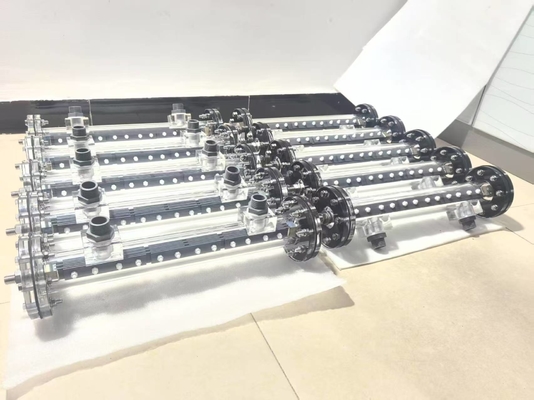-
Titanium Pipe Fittings
-
Titanium Welded Pipe
-
Titanium Pipe Flange
-
Seamless Titanium Tubing
-
Titanium Heat Exchanger
-
Titanium Coil Tubing
-
Titanium Alloy Sheet
-
Titanium Fasteners
-
Titanium Welding Wire
-
Titanium Round Bar
-
Titanium Forgings
-
Titanium Clad Copper
-
Titanium Electrode
-
Metal Sputtering Target
-
Zirconium Products
-
Sintered Porous Filter
-
Shape Memory Nitinol Wire
-
Niobium Products
-
Tungsten Products
-
Molybdenum Products
-
Tantalum Products
-
Equipment Products
-
Aluminum Products
-
Stainless Steel Products
Sodium Hypochlorite Generator for Disinfection / Water Treatment

Contact me for free samples and coupons.
Whatsapp:0086 18588475571
Wechat: 0086 18588475571
Skype: sales10@aixton.com
If you have any concern, we provide 24-hour online help.
x| Working Current | 650-800A | Pt Purity | 99.96% |
|---|---|---|---|
| Conductivity | Good | Diameter | Customized |
| Advantage | Effective.long Working Life.best | Application | Electrolysis |
| Highlight | Disinfection Sodium Hypochlorite Generator,Water Treatment Sodium Hypochlorite Generator |
||
Sodium Hypochlorite Generator for Disinfection / Water Treatment
What is a Sodium Hypochlorite Generator?
A sodium hypochlorite generator is a device that electrolyzes brine (NaCl solution) to produce sodium hypochlorite (NaClO) on-site. It is widely used in disinfection, water treatment, and environmental sanitation.
Working Principle
Electrochemical Reactions:
By passing a direct current through a diluted brine solution (typically 3–5%), the following reactions occur:
At the Anode (Oxidation):
At the Cathode (Reduction):
Sodium Hypochlorite Formation:
The final product is sodium hypochlorite (NaClO), a powerful oxidizing disinfectant.
System Components
| Module | Description |
| Brine Preparation System | Mixes industrial salt with water to achieve a specific concentration. |
| Electrolytic Cell | Core reaction chamber containing anode and cathode. |
| Rectifier Power Supply | Provides stable DC current (e.g., 24V, 48V). |
| Dosing Pump/System | Controls the dosing rate of the hypochlorite solution. |
| Hydrogen Vent System | Safely discharges hydrogen gas generated during electrolysis. |
| Control System (PLC) | Automates operations such as polarity reversal and dosing. |
Anode Material Features
The anode typically uses a titanium substrate (e.g., GR1/TA1) coated with MMO (Mixed Metal Oxides) such as ruthenium and iridium oxides.
Key advantages:
-
Excellent stability and corrosion resistance
-
High electrocatalytic activity
-
Supports polarity reversal to extend electrode lifespan
Advantages
| Benefit | Description |
| On-site Generation | Eliminates risks of storing or transporting chlorine. |
| Safe Operation | Uses low-concentration brine and low voltage; no free chlorine gas is released. |
| Low Operating Cost | Main consumables are salt and electricity. |
| Environmentally Friendly | No heavy metal contamination. |
| High Automation | Suitable for unattended or remote operation. |
| Wide Application | Used in municipal, industrial, medical, and residential water systems. |
Typical Applications










